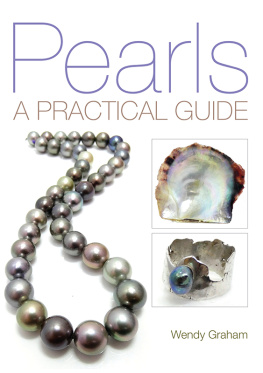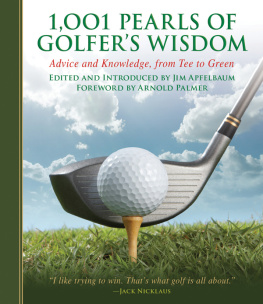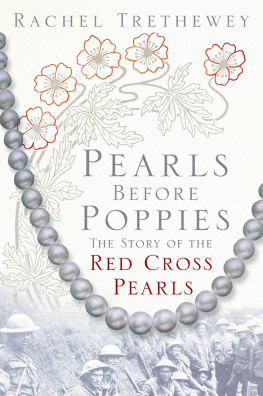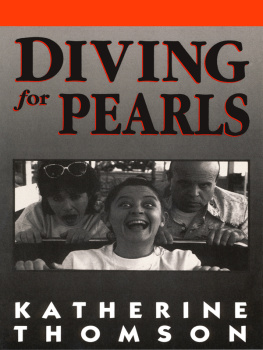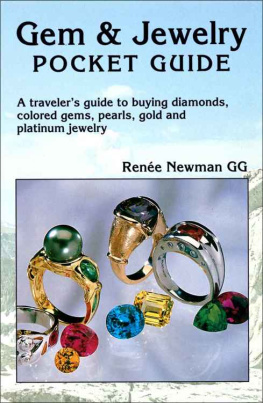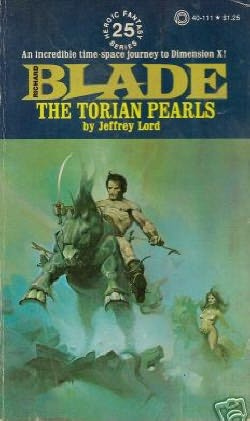Page List
Pearls
A PRACTICAL GUIDE
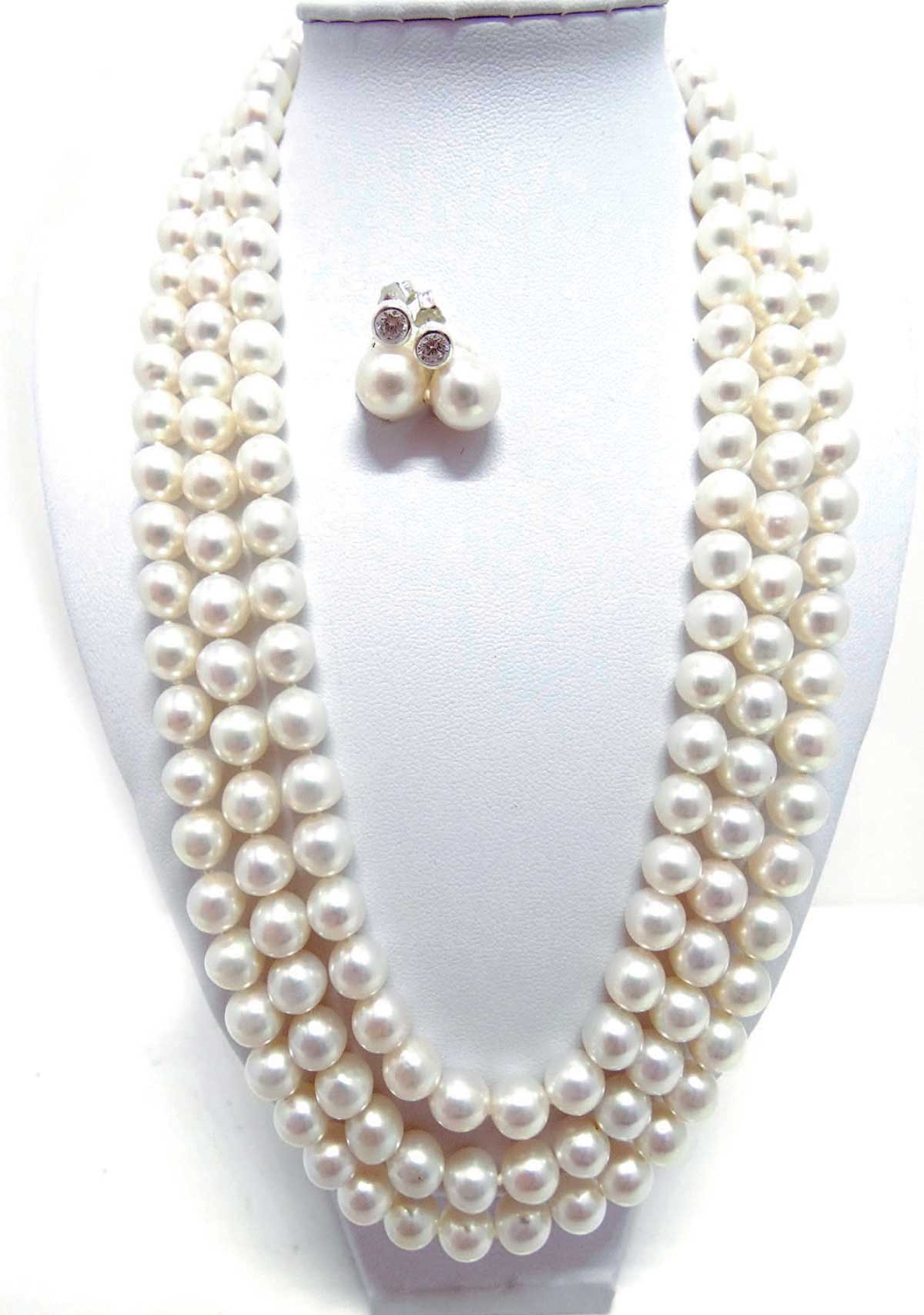
Three-strand necklace of white farmed all-nacre freshwater pearls, with matching earrings. Made to commission in emulation of the regular day-wear pearls of Her Majesty Queen Elizabeth II. The pearls are AAA grade and have metallic lustre. Four strands of matching pearls had to be found, of the highest quality, with hardly any flaws and all the same intensity of lustre, base colour and overtones. Plus two perfect and matching slightly larger pearls for the earrings.
Pearls
A PRACTICAL GUIDE
Wendy Graham

First published in 2021 by
The Crowood Press Ltd
Ramsbury, Marlborough
Wiltshire SN8 2HR
www.crowood.com
This e-book first published in 2021
Wendy Graham 2021
All rights reserved. This e-book is copyright material and must not be copied, reproduced, transferred, distributed, leased, licensed or publicly performed or used in any way except as specifically permitted in writing by the publishers, as allowed under the terms and conditions under which it was purchased or as strictly permitted by applicable copyright law. Any unauthorised distribution or use of this text may be a direct infringement of the authors and publishers rights, and those responsible may be liable in law accordingly.
British Library Cataloguing-in-Publication Data
A catalogue record for this book is available from the British Library.
ISBN 978 1 78500 813 9
Acknowledgements
Thanks to Stephen Goldsmith for the idea; Loc Wiart for the Tahitian shells; Devchand Chodhry and all at Orient; Nick Sturman GIA for technical facts; Steve Metzler for natural pearl info; Douglas Cortez for Cortez info and introducing me to epigenetics.
Photo credit: Steve Metzler for the photo of his pipi pearl necklace; all other photographs by the author.
CHAPTER ONE
PEARL BASICS
General Biology
Bivalves (which include oysters and mussels simple animals with shells in two halves) are a very early form of life on planet Earth. They first appeared in geologic time 500 million years ago in the early Cambrian era. There are now over 9,000 different species, each occupying a specialized evolutionary niche. Only a few of these produce the wonder of nature called a pearl.
Mollusca is a morphologically diverse and speciose phylum (section of the tree of life), with a long and rich history dating back to the Cambrian geological period (541 to 485.4 million years ago). Molluscs in general have only a rudimentary nervous system and simple circulatory fluids. They do not have intelligence but react to various sensations such as touch and temperature as well as food.
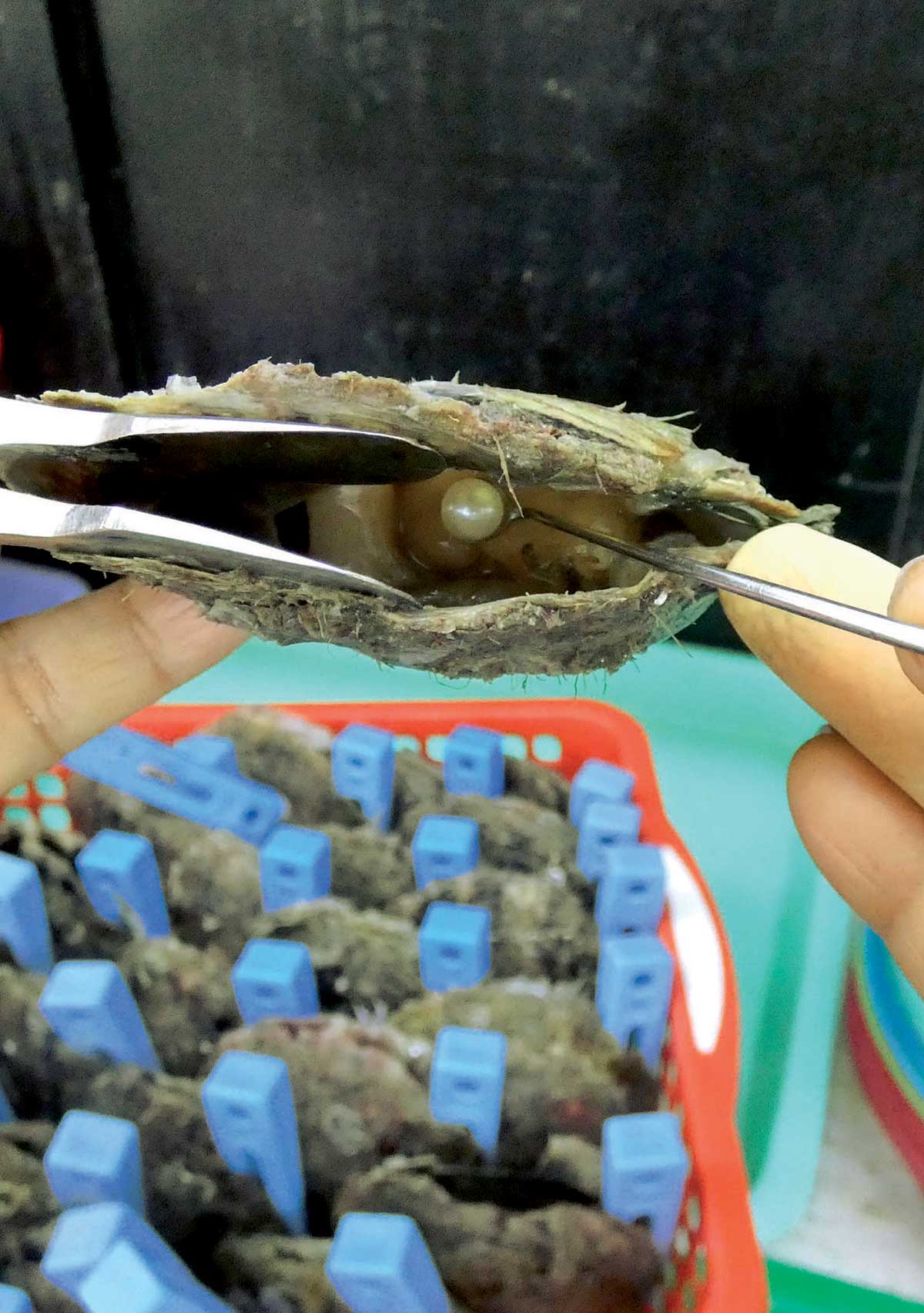
A pale gold akoya pearl, as it is harvested in Vietnam. The shells in the basket in the foreground, pegged slightly open, are being assessed as mantle tissue donors for the next generation of pearls.
Interestingly they can and do change sex. Spat (babies and juveniles) are equally male or female, but by maturity a majority will be male. Usually female oysters produce the best quality pearls.

Generalized diagram of a theoretical and generic bivalve mollusc.
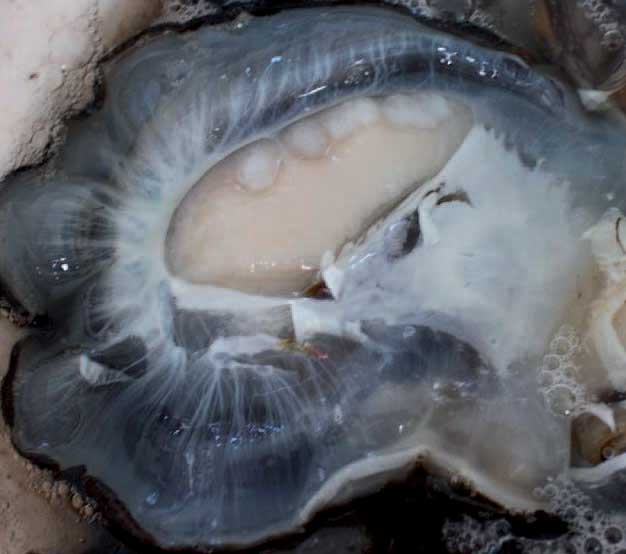
The reality not quite so clear. In the centre is the adductor muscle, which opens and closes the shell. The mantle is the frill all around. This is a South Sea Pinctada maxima.
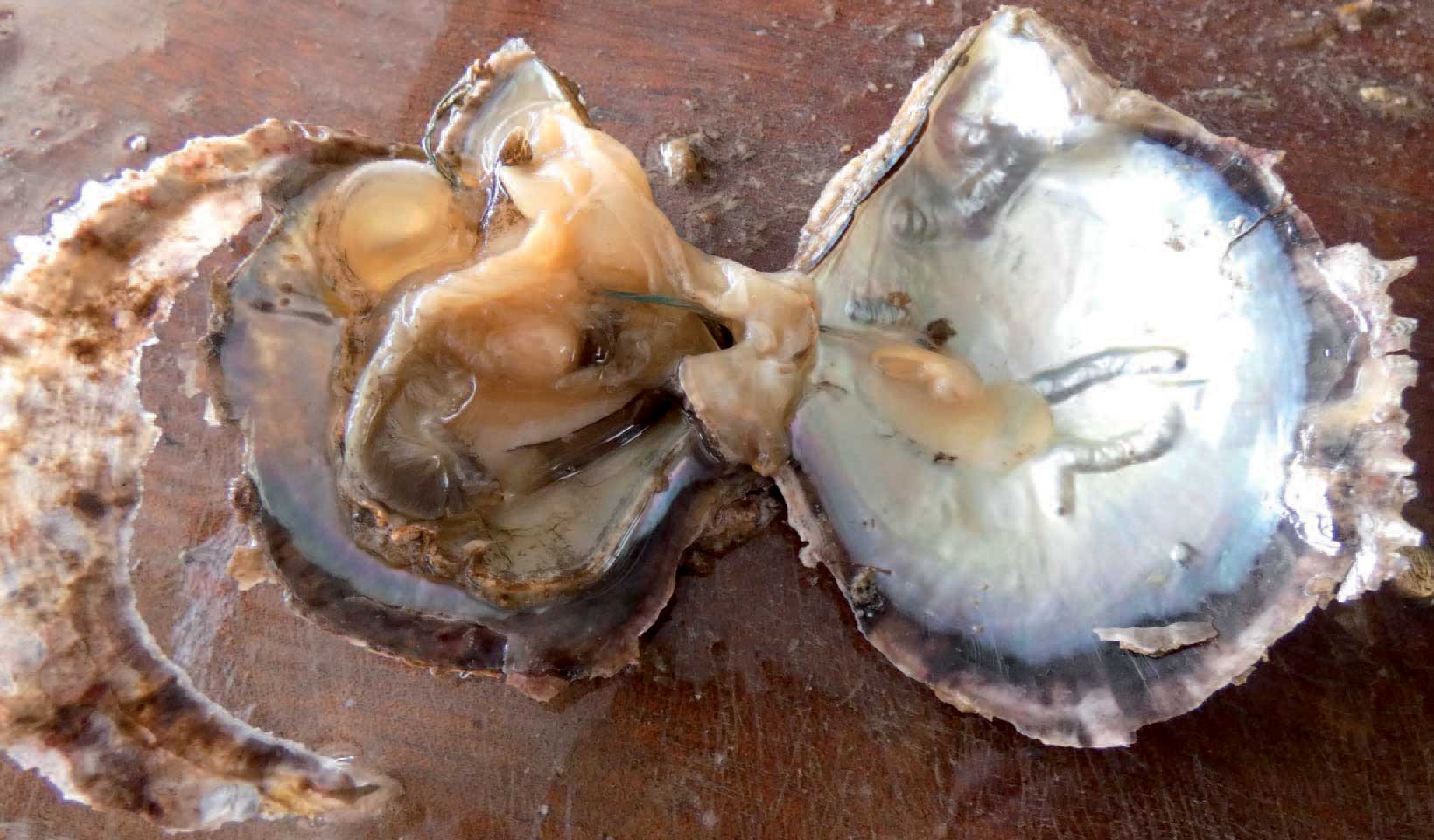
A newly opened akoya shell. Although the anatomy is not clear, you can see where some parasites have burrowed through the shell on the right and left tube-like tracks in the nacre. Also you can see how thin an akoya shell is. It is easily opened with a small sharp knife right through the shell. (South Sea shells require men with muscles and machete-sized sharp knives and butcher-style metal chainmail mesh safety gloves.)
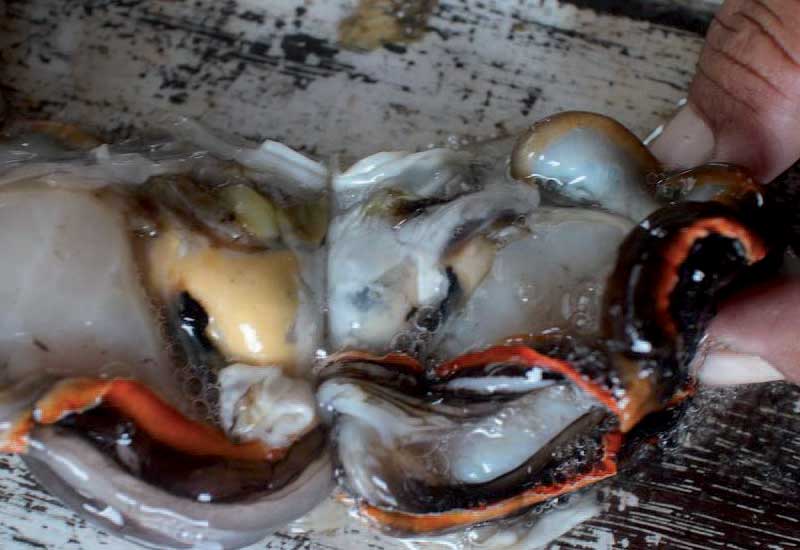
Female South Sea oyster to the left, male to the right.
What Is Nacre?
Nacre is made up of 90 per cent aragonite (orthorhombic calcium carbonate crystals); 5 per cent conchiolin (an organic compound which binds the crystals together); some random organic material; and trace elements such as strontium, magnesium and sodium. Why aragonite? Because its crystalline, hexagonal structure absorbs impact damage better than amorphous calcite.
The environment adds porphyrins (which are water-soluble nitrogenous organic compounds). In shells these porphyrins combine with metals such as lead and zinc to form metaloporphyrins.
In form, nacre is made of hexagonal platelets of aragonite and conchiolin, which provide bonding. The specific lustre, iridescence and colouring of nacre and, therefore, of any pearl that it forms depends on the number and thickness of the various layers, as well as on whether or not the layers overlap one another. Orient in a pearls lustre comes from the thin-film interference and light diffraction (think oil on water) caused when light passes through the nacre of a pearl. The iridescence, or lack thereof, is caused by the size of the aragonite platelets on the surface of the pearl.
Another extremely rare lustre effect is water. When a pearl has water it looks as if the surface is below a drop of water; it has an elusive surface translucence.
Nacre
Nacre is secreted by specialist cells of the dorsal epithelial mantle tissue.
Nacres refractive index is 1.53 to 1.69.
A pearls specific gravity ranges between 2.72 and 2.78.
Hardness is around 3.5 (Moh).
Classifying Pearls
There are several ways to classify pearls.
Cultured/farmed v. natural/wild
A cultured or farmed pearl is any pearl which has been produced with the intervention of man. Most pearls available today are cultured/ farmed pearls. Cultured is a jewellery trade business term for farmed. Because of confusion with man-made laboratory diamonds, the World Jewellery Confederation allowed pearls to switch to farmed as the official descriptor in late 2019.
Natural pearls are pearls produced wholly by nature with no intervention by man. Prized and very rare, until the 1930s they were the only pearls available. (Not to be confused with the description of natural-colour pearls, which are pearls that have not been colour-treated in any way.)
Seawater/freshwater
Until recently, good quality cultured pearls were always saltwater pearls. But in the last twenty years Chinese pearl farmers have gone from producing pearls that look like white Rice Krispies to large, smooth, metallically shiny round pearls that are challenging even the most valuable South Sea pearls.

